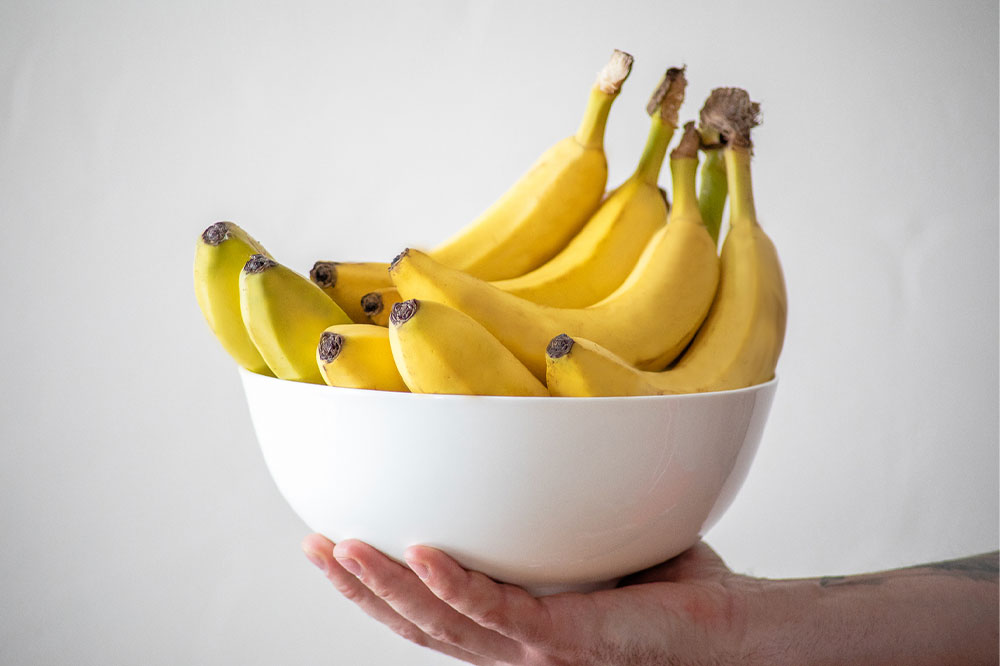
10 high-potassium foods to avoid with hyperkalemia
Hyperkalemia is a condition that results from increased levels of potassium in the body. Although potassium is an essential mineral in the functioning of the heart and the neuromuscular system, its abundance can cause harm to these organs. Common symptoms include fatigue, weakness, nausea, muscle spasms, and shortness of breath. One of the most effective ways to prevent or manage the condition is by eliminating these high-potassium foods from one’s daily meals.
Bananas
Bananas are the first food that comes to mind when discussing high-potassium foods. It is the easiest and fastest way to replenish the body’s stores of potassium. It helps in faster recovery from workout sessions and is a snack of choice among athletes. However, it is important to avoid this potassium ambassador for hyperkalemia patients.
Tomatoes
These are among the common foods that contain high amounts of potassium. Moreover, the amount of potassium goes up in tomato products like tomato sauce, paste, powder, and more where the concentration grows. Moreover, sun-dried tomatoes contain high levels of potassium. Since they are a common ingredient in foods like sandwiches, pastas, and salads, it is best to avoid them. One can try finding alternatives for sun-dried tomatoes or not including them in meals frequently.
Lentils
Lentils are an excellent source of fiber and protein. They add satiety value to the meal. In fact, a single cup of lentils can provide up to 730 mg of potassium. That covers a substantial portion of the recommended daily potassium intake of an individual. Lentils make a great addition to soups, chilies, salads, and more. However, for patients with hyperkalemia, it is advisable to avoid using them regularly. Canned beans and lentils also contain high amounts of salt, another mineral that needs to be monitored.
Kiwi
Kiwi has comparatively lower levels of potassium when compared to fruits like banana and oranges. However, they still belong to high-potassium foods that need to be avoided with hyperkalemia. Other high-potassium fruits include apricots, mangoes, and pomegranate. Fruits that are safer to include as snacks or meals include options like apples, watermelon, and berries.
Avocado
Another healthy fruit on the list is avocado. The dense creamy fruit is high in fiber content and healthy fats that prove beneficial for heart health. Another factor that makes it great for heart health is its high potassium content. However, hyperkalemia patients must steer clear of avocados.
Dairy
Dairy and dairy products have long been used as regular ingredients in daily meals. The food group is believed to be healthy not only for the bones but also for other essential organs. A single cup of whole milk is believed to have around 350 mg of potassium. The amount is higher in dairy products like yogurt and cheese. One can decide to use alternatives to replace dairy but it is advisable to do so after talking to healthcare practitioners. Dairy alternative like soy milk also contains a considerable amount of potassium, so the amount being used daily needs to be monitored.
Potatoes
These high-carb foods have a bad reputation when it comes to their nutritional contribution to meals. However, if considered seriously, mashed, baked, and roasted potatoes are quite healthy. It is deep frying and adding it to junk foods that take away its healthy qualities. One of the essential nutrients that potatoes contain is potassium. Based on the preparation method, the amount of potassium may increase or decrease. But, the general quantity of it remains high. It is, therefore, recommended to control the number of potatoes being included in daily meals or eliminate them completely if possible. Sweet potatoes are nutritionally dense in potassium, too, so they must not be used as a replacement for potatoes.
Spinach
This is another common source of potassium. It is important to monitor its regular intake since it is difficult to completely eliminate it from meal plans. Vegetables like Swiss chard, bok choy, and other dark leafy greens also come with a high potassium content. So, using them in less quantities helps control the amount of potassium that enters the bloodstream. Lettuce leaves, on the other hand, are a comparatively safer option to add volume and satiety to salads. However, maintained portion size is advisable.
Dried fruits
Dried fruits and nuts are a great alternative to fresh fruit. They are dried-up and concentrated forms of fresh fruit that can, at times, be difficult to find and keep handy. However, this also means that the nutrients being utilized by the body from this food are also in their concentrated form. Therefore, when including dried fruits in meal prep or snacks, it is important to note that the body might be allowing entry to high doses of potassium, which is not advisable for those with hyperkalemia.
Salt substitutes
Most salt substitutes make use of potassium to replace sodium. It is believed to mimic the taste of salt and is considered a healthy option for people with health or kidney disorders. However, for those with high levels of potassium in their blood, these substitutes can prove dangerous.
Apart from avoiding high-potassium foods, it is necessary to consult a doctor. Getting professional care helps avoid complications. Doctors might prescribe the following treatment options to help decrease the severity of the condition and enable quicker recovery:
LOKELMA® (sodium zirconium cyclosilicate)
LOKELMA® is an FDA-approved treatment option for hyperkalemia. The recommended dosage includes administration of the oral suspension three times a day. LOKELMA® contains sodium zirconium cyclosilicate as its primary ingredient. It works by binding with potassium particles available in the blood in place of hydrogen and sodium particles.
LASIX® (furosemide)
LASIX® is a furosemide-containing FDA-approved treatment option that belongs to the class of diuretics. It helps in the elimination of water and salt in the body. The increased water excretion prevents the body from reabsorbing potassium after it has been filtered out by the kidney.